To move a piano is no easy task and one that should not be taken lightly. It is a very dangerous process which involves a lot of preparations and planning if you want your relocation to be a safe one. You have to be aware of every specific detail regarding the piano moving task and every risk before you begin.
Whether you’re planning a short- or long-distance move, you’re likely to run into a few obstacles with your plans if you own a piano. Whether you perform beautiful music on the instrument daily or let it collect dust in a corner, you definitely don’t want to leave it behind or see it damaged during transit.
There are multiple factors to take into consideration when it comes to moving your piano—don’t assume you can just roll it from one place to the next without endangering it.
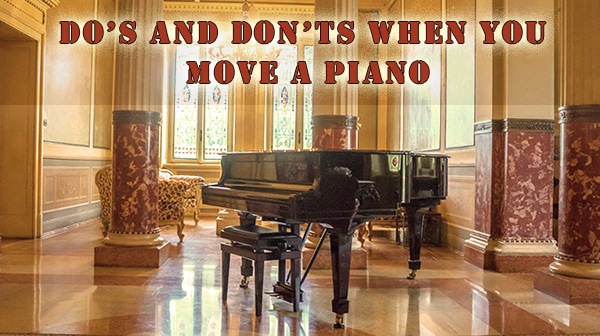
Before you start moving your piano, you must first understand that its complex mechanical structure and oddly-shaped body make it very difficult for relocation.
First: Know Your Musical Instrument
Your piano is almost certainly the largest and most complex mechanical device in your home. A standard piano has 230 strings and about 10,000 separate moving parts. This is why tuning a piano can be such an involved process. Moving it from one home to another without the utmost care can easily cause unforeseen problems.
The size and weight of pianos make them so hard to move. For example, a concert grand piano can reach a height of over 108 inches and a weight that is 1,000 pounds or even more depending on the manufacturer.
The largest piano ever made has a width of 98 inches, a height of 75 inches and a length of 238 inches. This monster of a piano has an outstanding number of 156 keys rather than the usual 88 keys and was constructed by Daniel Czapiewski from Poland.
When it comes to acoustic pianos, there are two major types on the market:
- Grand Pianos are the type most often seen in classical amphitheaters. They have a large, harp-shaped soundboard and typically roll on caster wheels. These pianos can weigh more than 1,200 pounds, while baby grands have the same shape in a smaller frame, usually weighing around half as much. There two other types of grand pianos which are in the middle between concert grand and baby grand. These types are medium grand and living room grand.
- Upright Pianos are smaller, more portable instruments commonly seen in clubs, studios and homes that can’t accommodate a more massive option. Portable is a relative term here since even a small spinet piano can weigh more than 400 pounds. There are other types of upright pianos that are a lot bigger than the spinet ones. Classic full-size upright pianos can reach a weight of nearly 900 pounds and a height of about 60 inches. Other types of vertical pianos include console and studio pianos.
If you have an upright piano, its compact shape will help you let it fit through most door openings. An experienced team of four or five movers should be able to transport the instrument safely. Moving a grand piano, however, can require making sweeping changes to the property or even lifting the instrument through a large window using a crane.
The size and weight of pianos make them so hard to move. For example, a concert grand piano can reach a height of over 108 inches and a weight that is 1,000 pounds or even more depending on the manufacturer. The largest piano ever made has a width of 98 inches, a height of 75 inches and a length of 238 inches. This monster of a piano has an outstanding number of 156 keys rather than the usual 88 keys and was constructed by Daniel Czapiewski from Poland.
Basic Considerations to Keep in Mind When Moving a Piano
Whether you have a concert grand or a spinet upright, there are a few things you’ll want to do in order to make sure the move is a success:
- Do consult with professional piano movers beforehand. Even if you feel like you cannot afford their services, the quote may bring important considerations to your attention.
- Don’t start moving your piano without the necessary tools and supplies. Having the proper equipment will make your relocation safer and easier.
- Do move any furniture and other objects out of the piano’s traveling path before starting. It will be much harder to do this after you start, especially if the path involves stairs. If you are going to have to move your piano up and down through a flight of stairs, the best solution is to rent a ramp. By placing a ramp on the stairs, the actual lifting of the piano on the stairs will be reduced.
- Don’t use a transportation truck without a loading ramp. If the truck doesn’t have such a ramp, there is no way that the piano can be lifted and wheeled to the back of the moving vehicle.
- Do cover the piano in non-slip blankets, folding the edges beneath the instrument and securing them with moving cords to protect its finish.
- Don’t leave the lid unlocked—a bumpy ride or mistake can damage the instrument’s ivory keys.
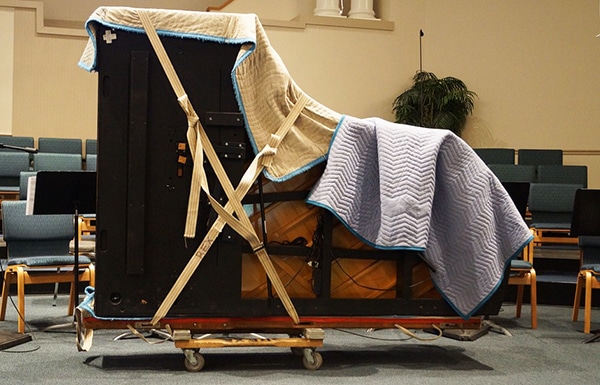
Knowing what to do and what not to do can be very useful when you relocate a large musical instrument such as the piano.
- Do place packing desiccants inside the piano before packing it up. If it’s loaded into a truck that stops in a humid environment overnight, the wood can warp and crack later on.
- Don’t begin this difficult moving process without a clear step-by-step plan. When you start moving your piano, everyone must know their tasks and how they are supposed to do it. Every step must be taken carefully with caution.
- Do secure the packed piano in the truck during loading. Any movement during transport can result in a damaged instrument, including damage that isn’t immediately visible.
- Don’t use typical cargo straps for the piano when securing it. Buy or rent heavy-duty furniture straps that can reliably hold the instrument’s weight during transit.
- Do remove a grand piano’s legs before moving. The legs are fragile and can easily break during transport. Additionally, removing the legs usually makes it possible to fit the piano vertically through doorways.
- Don’t pack the piano last. Put the piano in the very back of the moving truck, right up against the wall. If the interior of the truck isn’t level, place some wood planks on the floor so that the weight is evenly balanced.
- Do tune the piano after the moving process is completed. Even if the move goes perfectly, differences in humidity and atmospheric pressure in its new home will detune the instrument. Experts recommend tuning four times in the first year after moving, and then once or twice a year after the instrument accommodates to its new environment.
- Don’t try to leverage the weight of the instrument in one direction or another. Tipping the instrument over a set of stairs, for example, can put stress on the instrument’s midsection and permanently warp its frame.
Remember These Safety Tips Before Moving a Piano
Other things you’ll want to take into consideration include:
- What you’re wearing. It might not seem like a big deal, but when dealing with a heavy, cumbersome and awkward item like a piano, a pair of baggy pants or the wrong shoes can make a major difference. Don’t wear anything that can get caught on the instrument while it’s in transit and be sure to wear the most slip-proof pair of shoes you own. One wrong step can cause a dangerous accident—you don’t want to take any risks.
- The piano’s exact traveling path. This one is touched upon above, but you want to make sure you know every detail of the piano’s path to the loading truck. For instance, if you have four movers helping out, who takes the lead when the piano reaches the stairs? Who supports the instrument’s weight from the back and who guides it by directing its midsection? Leave nothing to chance and discuss this before anyone puts on a pair of moving gloves. Once you’ve arrived at your destination, you’ll want to perform this step all over again as well.
- Your piano’s exact measurements. Once you’ve dissembled the piano’s legs and placed it on the moving dolly, take out a tape measure and figure out whether
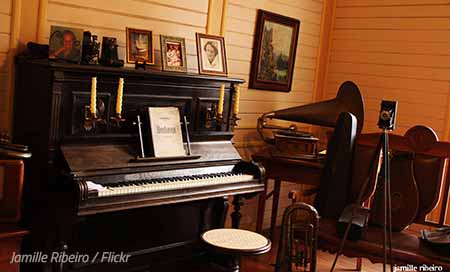
Safety should be your number one priority when you move a piano because, despite their sturdy look, pianos are very delicate and fragile musical instruments.
it will actually fit through the doorways you need it to travel through. Make sure to accommodate the instrument’s length as well, or you may find yourself stuck at an angle in a small hallway the piano can’t clear.
- Gather the proper moving team. If you are going to move your musical instrument without the help of professional piano movers, you are going to need the assistance of your trustworthy and loyal friends. You must gather at least 3 of your buddies for a normal size piano such as a baby grand, but if you have on your hands something as large as a concert grand, a total of 6 people are needed for the relocation of such a large musical instrument.The friends that you choose must be healthy with no back problems or other injuries. Even a small mistake can be catastrophic for both the piano and the people who are involved in the moving process. If you want a safe relocation, make your decision intelligently.
How to Move Electric Pianos
Another popular type of piano commonly seen in homes is the electric piano. Owners of modern electric pianos don’t have to worry about displacing tiny mechanical parts or re-tuning the instrument after the move, making them much more portable than their acoustic counterparts.
However, if you own an electric piano, you should move it with the same level of care you would apply to any delicate piece of electronics. Its keys can still be jogged loose during transit and its controlling hardware can be damaged by unexpected tumbles and turns. Most digital piano manufacturers offer hard travel cases for their products—it may be worthwhile to purchase or rent one for the move.
The Most Important Tip When Moving a Piano
Moving something as large as a piano with its oddly-shaped structure is no joke. If you are not careful, you can seriously damage your piano and the moving team could suffer injuries. Don’t rush this lengthy process if you want it to be a successful one. Patience and a clear mindset is the way to approach this complicated task.
Regardless of whether you are moving an acoustic concert grand or a small digital piano, you want to make sure you’re prepared to perform the move safely. Heavy lifting presents a wide variety of dangers to amateur movers, so you might get a quote from experienced professionals.





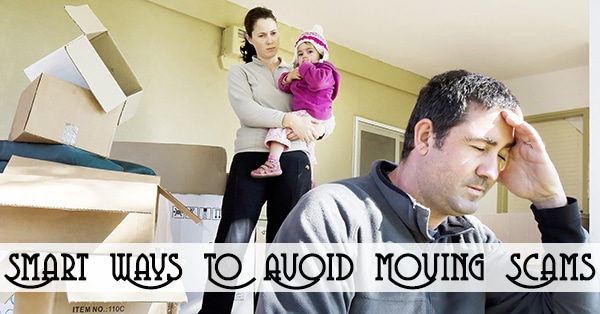

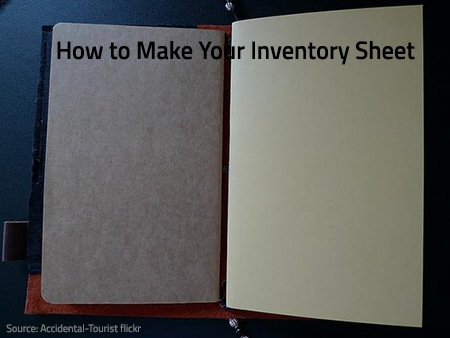

Yes. after moving do check your piano after moving. Check all the keys that if it works properly
Thanks for providing the detailed article.
What Alia writes is correct. When shipped, the grand is placed on its side where gravity does not hold the keys on the front rail pins. Often enough then, the front end of the keys will slip off the front rail pins that hold
the keys in place. That also slips the back end of the keys out of place. At delivery, when you open the grand piano fall-board, you’ll find keys that are stuck down and out of place. It doesn’t always happen but it can. To prevent this, the piano action and the keys can be secured before the piano is moved if the movers know how to do that. It might be best to ask your piano technician about this possibility before the grand piano is moved.